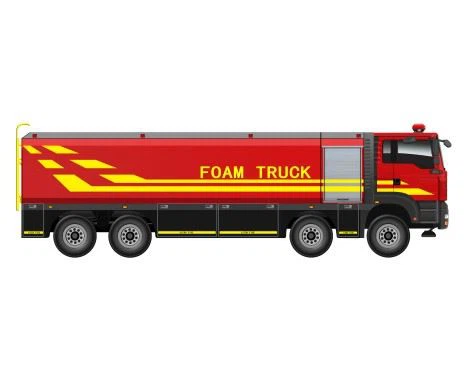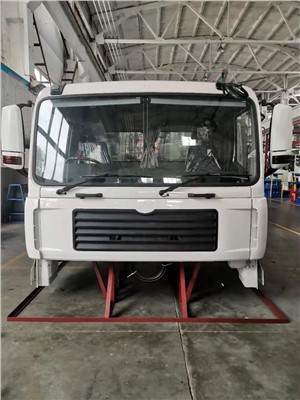Rear Load Garbage Trucks: The Backbone of Efficient Waste Management

In an era where effective waste disposal is crucial for environmental sustainability and urban cleanliness, rear load garbage trucks play a pivotal role. This article delves deep into the workings, benefits, types, and considerations surrounding rear load garbage trucks. With a comprehensive overview, practical insights, and frequently asked questions, you will gain a solid understanding of these essential vehicles.
Understanding Rear Load Garbage Trucks
Rear load garbage trucks are specialized vehicles designed for the collection of solid waste. These trucks have a large rear compartment to collect waste, and the loading is often performed manually or with the assistance of a compactor. Their design supports efficient waste disposal, making them a popular choice among municipalities and waste management companies.
Key Features of Rear Load Garbage Trucks
Design and Construction
Rear load garbage trucks are built with several significant features:
- Compact Design: The compact nature makes it easier to navigate urban settings.
- Robust Body: Built from durable materials to withstand the rigors of garbage collection.
- Customizable Containers: Options for different container sizes to fit various waste disposal needs.

Compaction Mechanism
The compaction system in rear load trucks plays a crucial role in maximizing the capacity of the truck:
- Hydraulic Systems: Use hydraulic power to compress waste, allowing for a more efficient load.
- Easy Operation: Controls are designed for user-friendliness, giving operators better control during operations.
Accessibility and Ergonomics
Modern rear load trucks are designed with the operators in mind:
- Low Loading Heights: Facilitates easy access for waste collectors.
- Safety Features: Includes features like backup cameras and alarms to ensure operator safety.
Types of Rear Load Garbage Trucks
There are a variety of rear load garbage trucks tailored for different purposes and needs:
Residential Collection Trucks
These trucks are designed for the regular collection of household waste. Their smaller size is ideal for navigating neighborhoods.
Commercial Waste Collection Trucks
These trucks are built with more robust systems to handle larger volumes of waste from businesses and industrial sectors.
Specialized Rear Load Trucks
Some rear load trucks are equipped to handle specific types of waste, such as recyclable materials or organic waste.
The Benefits of Rear Load Garbage Trucks
Efficiency in Collection
Rear load garbage trucks significantly enhance the efficiency of waste collection, reducing operational costs over time. By compacting waste, they can carry a larger volume, thereby reducing the number of trips required for garbage collection.
Environmental Impact
By optimizing waste collection, rear load trucks help reduce emissions from multiple truck trips. Improved efficiency contributes to lower fuel consumption and a corresponding reduction in carbon footprint.
Cost-Effectiveness
Investing in rear load garbage trucks can lead to long-term savings. The durability of these vehicles also reduces maintenance costs over their lifespan.
Practical Examples of Rear Load Garbage Trucks in Action
City Waste Management
Municipalities across the globe utilize rear load garbage trucks to manage urban waste effectively. For instance, cities like San Francisco employ these trucks to support their recycling initiatives, using them as both recyclable and general waste collection vehicles.
Commercial Entrances
Large retail chains often indicate the necessity for regular waste disposal, with rear load trucks facilitating daily pickups. This system allows businesses to maintain cleanliness and operational efficiency, showcasing an effective partnership between commercial entities and municipal services.
Maintenance and Care for Rear Load Garbage Trucks
Regular Inspections
Conducting regular inspections is crucial for ensuring that rear load trucks remain in optimal condition. Key components to check include:
- Hydraulic systems
- Brakes and suspension
- Compaction systems

Cleaning Procedures
Post-collection cleaning is vital to prevent odors and contamination. In this instance, following a systematic cleaning protocol can vastly improve the truck’s longevity:
- Washing the truck’s exterior
- Cleaning the compaction chamber
- Regular maintenance on mechanical systems
Record Keeping
Keeping meticulous records of maintenance activities ensures that any problems are identified early. Such records can help in scheduling future maintenance and can be beneficial for budgeting and planning.
Factors to Consider When Choosing a Rear Load Garbage Truck
Capacity Requirements
Assess how much waste will need to be collected daily to determine the size of the truck. Consider the volume of waste generated within your area or operation.
Operational Costs
Consider not only the purchase price but also long-term operational costs, including fuel consumption, maintenance, and repair expenses.
Regulatory Compliance
Ensure that the trucks meet local regulations regarding waste collection, emissions, and safety standards.
Table: Comparison of Rear Load Garbage Truck Models
| Model | Capacity (Cubic Yards) | Fuel Type | Price Range |
|---|---|---|---|
| Model A | 15 | Diesel | $150,000 – $180,000 |
| Model B | 20 | Natural Gas | $200,000 – $220,000 |
| Model C | 25 | Electric | $250,000 – $300,000 |
Innovations in Rear Load Garbage Truck Technology
Smart Technology Integration
Recent advancements have integrated smart technology into rear load garbage trucks. Features like GPS tracking, route optimization software, and onboard diagnostics systems enable enhanced operational efficiency.

Fuel Efficiency Innovations
As the demand for environmentally sustainable practices increases, manufacturers are designing rear load trucks that utilize alternative fuels and improved engine technology to enhance fuel efficiency.
FAQ About Rear Load Garbage Trucks
1. What is a rear load garbage truck?
A rear load garbage truck is a type of waste collection vehicle that has a large compartment at the rear for collecting and compacting waste, making it suitable for both residential and commercial waste management.
2. How do rear load garbage trucks work?
These trucks utilize a hydraulic system to compact waste into a rear compartment. Operators manually or mechanically load waste into the truck, which is then compressed to maximize the payload.
3. What are the advantages of using rear load garbage trucks?
Advantages include efficient waste collection, reduced operational costs, and minimized environmental impact due to fewer trips needed for waste transport.
4. How can organizations maintain rear load garbage trucks?
Regular maintenance includes periodic inspections, cleaning of exterior and interior components, and keeping meticulous records of operational history and repairs.
5. What should I consider when purchasing a rear load garbage truck?
Potential buyers should evaluate capacity requirements, operational costs, compliance with local regulations, and the innovation of features suitable for their specific waste management needs.
6. Are there alternative fuels available for rear load garbage trucks?
Yes, there are models available that run on natural gas and electric, providing more environmentally friendly options compared to traditional diesel-powered trucks.
